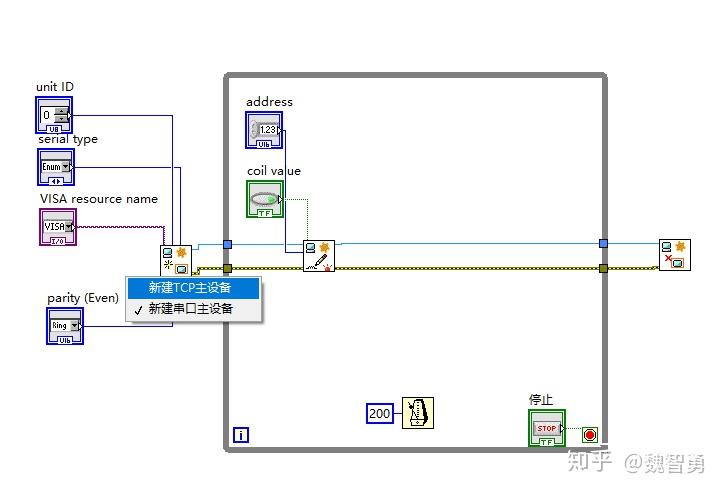

A unit ID is a number between 0 and 255 which is used to identify the server (or slave) address in RS-232 or RS-485 networks.
#Labview modbus server code#
Lucikly, the second library works perfectly (inside the library you will find the code responsbile for assign high prority fot this task). A Modbus message includes what is called the unit ID. First of all - there is small mistake in for loop (some bits are omitted), secondly - Raspbian is not Real Time OS, so counting time on the level of μ seconds without any prioritization of threads makes that reading values from DHT11 is highly error-prone. However, I recommend to use the second one, because the first one is not working. You will need to create a TCP connection to the IP address of the PLC as well as use the same local port number. All VIs are taken from the Modbus Master.lvclass and are listed below. On the LabVIEW side, the code is straightforward. I found two Python libraries that enable to read data from this sensor: A Modbus client (LabVIEW) sends its messages on the port 502, and a Modbus server (PLC) receives messages on 502. In my example, Raspberry Pi works as a Modbus TCP Gateway that transfers data about temprature and humidity. Values = context.getValues(register, address, count=5)ĬtValues(register, address, values) In this line, the current values are retrieved:

The function that is responsible for udpating the Modbus memory - context - is called "updating_writer". In this programme, server updates their registers you will find here: Modbus I/O Servers is included in the LabVIEW DSC Module and the LabVIEW Real-Time Module. Modbus I/O Servers provide a simple way to access and write Modbus data in LabVIEW. To make it easy, I've based my code on the example from pyModbus. The Modbus I/O Server allows you to easily link Modbus register values to Shared Variables that you can use in your LabVIEW VIs. Finally, we can look at Modbus TCP Server.


 0 kommentar(er)
0 kommentar(er)
